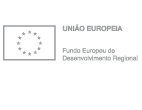Hands that embroider landscapes
Add MyTrip
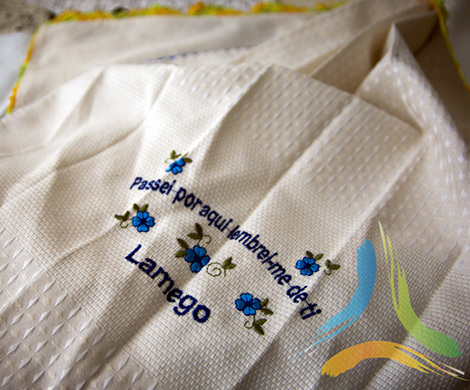
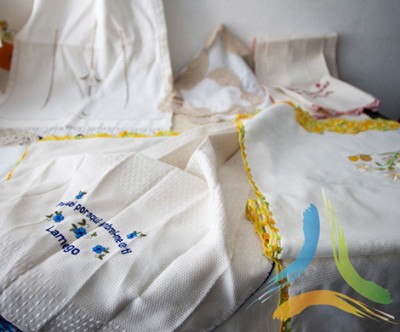
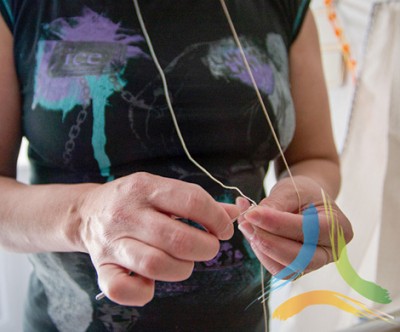
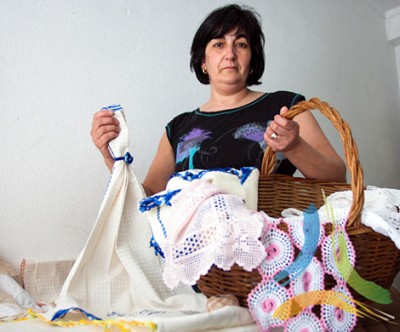
41.100957367556305
-7.809819841430681
Hands that embroider landscapes
Rosa Gonçalves is passionate for embroidery and lacework. As a way of paying tribute to the beauty of her homeland, she has devoted herself to transferring on to cloth the landscapes that have always enthralled her. It has been two decades...
Presentation
Rosa Gonçalves is passionate for embroidery and lacework. As a way of paying tribute to the beauty of her homeland, she has devoted herself to transferring on to cloth the landscapes that have always enthralled her. It has been two decades of commitment and many hours hunched over the whims of the threads.
Her work somehow mirrors the Douro on cloth, through threads that trace meandering paths, harmoniously conducted by the baton of the needles and resulting in beautiful embroidered cloths.
For the sake of identity, the embroiderer makes a point of representing the Douro region, its people and landscapes, in her pieces. “I prefer to imprint the style of the region in my work. So, you have the rabelo boat, the vineyards and the grape-picking time.”
As a result, her lacework presents incomparable artistic patterns. “My work stands out from the rest because it shows these details that characterise the Douro. I’ve always tried to pass on to the cloth the good things of our region with regard to landscapes and customs,” she points out.
Her work is the result of an old love which dates back to when she was still a girl, when she would peek at the art that she learned from her mother’s fingers. “She’s someone who takes much pleasure in making this type of work and today, nearing 90, she still makes it with the same devotion. It was as I watched her that I developed a liking for it.”
Rosa Gonçalves explains unassumingly that the lacework she produces is completely “normal”. However, it takes only a close and more critical look to understand that there is every reason to say that it is superlative work that comes out of those hands.
It is not easy to unravel the origins of the art of crochet. Some theories indicate that it was the consequence of the development of traditional practices from Arabia, South America or China. In Europe, crochet became popular in the 19th century.
A varied range
Doilies and edgings to be applied to curtains, tablecloths or church altar cloths all emerge from the embroiderer’s fingers. “I only use a tricot needle and thread. Everything is simply made with that”, she says. The rest boils down to the craftsmanship of her hands which are used to point the needles in the right direction.
The time needed for each piece depends entirely on its size. A small piece may take two or three hours, but a bedspread or a tablecloth may require “several years” to complete.
To fill her lacework with varied images, Rosa buys needlework magazines where “many new and different things” always appear. I usually take the pattern and follow the design there. Stitches are made according to the design,” she explains.
Sometimes, Rosa threads the needle which will stamp the embroidery on the linen. Other times, she holds a small metal rod which, after making a slipknot, travels from right to left, adding rows of stitches until the lace is finished.
Because it is so specific, her work has different market values. “The cheapest piece may cost 10 euros, but a bedspread, on account of the time taken, may sell for as much as 600 euros. A set of doilies for a room or a bedroom can cost up to 35 or 40 euros,” she reveals.
The difference in prices is also related to the material used. A piece that uses a lot of linen is more expensive. If the fabric is of lower quality, the piece will naturally be cheaper.
Rosa’s biggest clients are the Douro tourist agencies that sell gifts. Her work is also on sale near the quay at Peso da Régua and in São João de Tarouca, in a shop selling souvenirs from Lamego.
The lacemaker also sells directly and demand seems to increase during religious festivities, such as the feast of Nossa Senhora dos Remédios, or for christenings, communions and weddings. “I’m very much sought after for baptism linen towels, and people say they’re very pretty and original,” she says with pride.
Text: Patrícia Posse | Daniel Faiões
Schedules/Prices
Contacts
Owner/Responsible
Rosa Gonçalves
Rosa Gonçalves
Cellphone
+351 969 617 982
+351 969 617 982
Latitude
41.100957367556305
41.100957367556305
Longitude
-7.809819841430681
-7.809819841430681









